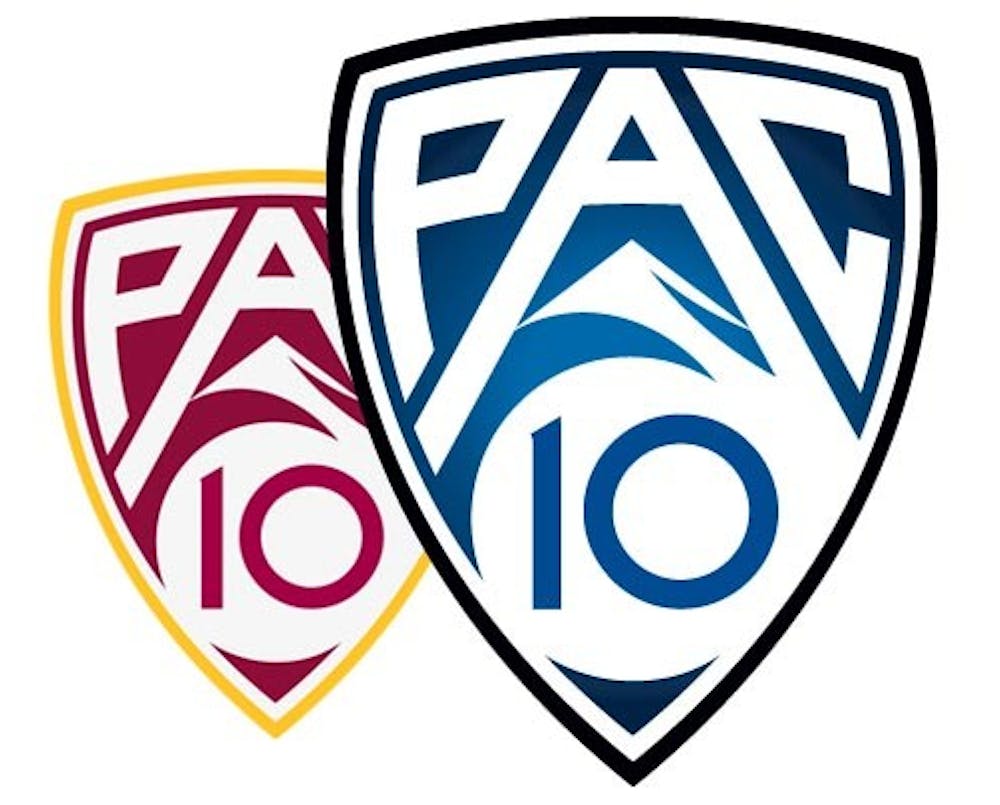After more than 20 years of complacency, the Pacific-10 Conference is changing.
It’s changing so much, that it will soon cease to exist, at least in its current form.
Under second-year commissioner Larry Scott, the Pac-10 is moving in a new direction. That direction includes the additions of Colorado and Utah, the first since UA and ASU joined in 1978, moves that will eliminate the Pac-10 and create the Pac-12.
“It’s a little bit Earth-shattering for us to have actually addressed the aspect of expansion and the potential divisional play led by a playoff game at the end,” said ASU Vice President of University Athletics Lisa Love. “That’s a huge change from how we’ve been operating.”
Expansion is just one of many changes Scott has implemented in the self-proclaimed “Conference of Champions” since taking over in July 2009 for Thomas C. Hansen, who led the conference for 26 years.
With Scott’s renewed vision in the forefront, the conference is refocusing all its individual powers behind the Pac-10 name to rebrand itself as the nation’s power conference.
When Hansen retired, the presidents of the Pac-10 schools saw an opportunity to evolve. They decided on a commissioner who would embrace change and take the storied conference in a new direction.
“He’s not your traditional collegiate commissioner,” Pac-10 chief marketing officer Danette Leighton said.
When Scott arrived in the Pac-10 after leaving his job as chairman and chief executive officer of the Women’s Tennis Association, the conference had ten individual identities.
“We have been a very prolific conference with 10 institutions for many years,” Love said. “We’ve had 10 separate high-flying, high-performing universities that are very impressive, but not necessarily unified behind the power of our group.”
Scott saw the reverence for names like Pat Tillman and John Wooden, and the esteem garnered by the likes of Southern California football or UCLA basketball. But that didn’t translate to the Pac-10 as a whole. It was time to rebrand.
“He recognized a huge opportunity in the importance of the Pac-10 really developing who and what their brand is and proactively telling that story,” Leighton said.
First, Scott reorganized the leadership at the top of the conference and created a marketing arm, a first for the Pac-10, led by Leighton.
Scott then hired New York-based branding firm SME to evaluate the conference and identify where change was needed, Leighton said. The firm, which also works with every major sports body in the U.S. except Major League Baseball, launched a massive research and data-gathering operation.
Interviewing student-athletes, coaches, university presidents and executives at ESPN, Nike and Fox, SME first found that the Pac-10 lacked exposure.
Pac-10 football games were scarcely broadcast outside the region and the conference as a whole largely kept to its part of the country. On top of it all, the conference lacked a symbol of its strength and mission. That’s where Mutt Industries came in.
The Portland-based advertising agency crafted a new logo for the conference featuring a mountain and wave to signify the unique landscape exclusive to the Pac-10. The logo will soon be everywhere from fields and courts to uniforms and posters in the hope that it will become as recognizable as that of the NBA or NFL.
“That work that SME did really became the foundation of how we live and breathe as a brand,” Leighton said.
Rebranding the Pac-10, though, was about much more than a new logo. So Scott got aggressive and went after expansion. At one point it looked as though the Pac-10 would add as many as six new schools, including the likes of Texas and Oklahoma. However, finishing with just Colorado and Utah was hardly seen as settling.
“The freshness and the excitement of adding Colorado and Utah clearly changes the competitive landscape,” Love said.
Colorado athletic director Mike Bohn is excited as anyone to be making the move to the conference whose 391 NCAA national team championships far exceed the total of any other conference.
“We’re very excited, thrilled and honored to be joining one of the great institutions of the west,” Bohn said. “There’s no question that we share that energy and that optimism and that entrepreneurial spirit that the commissioner brings to the league.”
Love said that the additions would indeed lead to divisional format and a league championship game akin to that of the Southeastern or Big Ten conferences.
“The platforms that the strength of the league will be presented in will be more prolific, and that bodes well for us,” Love said.
Not only does the expansion raise the profile of an already successful conference, but it also boosts the Pac-10’s appeal with a new television contract in the works following the 2011-2012 season.
“It’s a conference with great tradition that is trying to position itself favorably in the ever-changing landscape of college athletics,” ASU men’s basketball coach Herb Sendek said. “As your exposure quotient increases, that can also affect the recruiting class. The whole thing kind of comes together synergistically.”
To further elevate the Pac-10’s national footprint, the conference decided to approach the perceived East Coast bias head on.
The Pac-10 went national with a bi-coastal media tour with its football coaches. Starting with a media day in New York, the Pac-10 commanded the attention of the nation, moving on to ESPN headquarters in Bristol, Conn. and wrapping the expedition at the Rose Bowl in Los Angeles.
“Its an exciting time for the Pac-10,” Sendek said. “There’s a lot of energy throughout the conference.”
Love sees the rebranding of the Pac-10 as an opportunity to simultaneously evolve ASU.
“It benefits ASU significantly to be part of the Pacific-10 Conference—soon to be the Pacific-12 Conference—and it benefits us greatly for the conference to have a renewed vision,” Love said.
The transformation of ASU — and the Pac-10 — however, won’t come at the expense of the conference’s rich, proud tradition.
“I don’t think for a split second that anyone will neglect to remember the tradition that the Pac-10 has,” Sendek said. “You build your future on the tradition and they can exist together.”
Bohn echoed a similar sentiment for Colorado, which will leave the Big 12 Conference after more than 60 years of affiliation with the league in its various forms.
“We recognize all those things that are in essence a rebranding, but we also understand that Colorado’s rich tradition is what it is and we certainly don’t want to lose sight of that,” Bohn said. “You really want to surround yourself with the best. We believe that’s what we’ve done.”
The best is what Scott wants, and he isn’t willing to settle for anything less.
When the Pac-10’s rebranding went public in July, Scott wrote in a letter on the conference’s new website that the effort was about “taking the ‘Conference of Champions’ to the next level of performance on and off the field of play.”
Scott wrote of a “renewed vision” and a “new era” for the conference, but most telling was the first line of his letter: “Welcome to the new Pac-10.”
Reach the reporter at tyler.lockman@asu.edu





